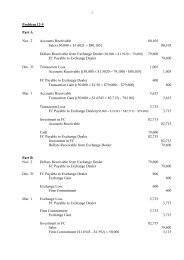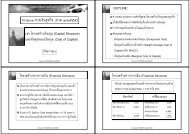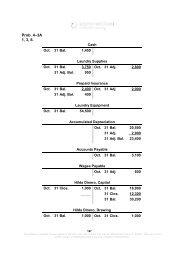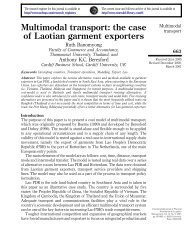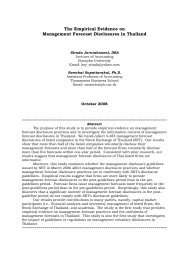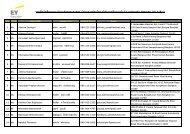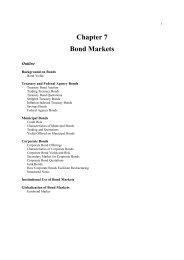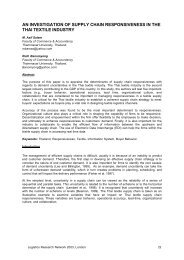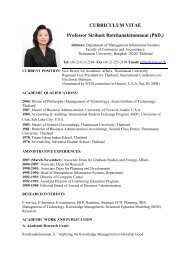The Role of Communication Strategies in Change Management ...
The Role of Communication Strategies in Change Management ...
The Role of Communication Strategies in Change Management ...
Create successful ePaper yourself
Turn your PDF publications into a flip-book with our unique Google optimized e-Paper software.
Somboon Kulvisaechana<br />
Nonetheless, <strong>in</strong> the article, Manag<strong>in</strong>g Rapid <strong>Change</strong>: From <strong>The</strong>ory to Practice, written by<br />
McDonald (2000), theoretical and practical perspectives on organizational change are<br />
dist<strong>in</strong>guished. He notes that some academics have applied Darw<strong>in</strong>’s “survival <strong>of</strong> the fittest”<br />
theory to the organizational change theory (Vaill, 1989). Mean<strong>in</strong>g that any organizations,<br />
which fail to make changes, are likely to be elim<strong>in</strong>ated from the competition. In practice,<br />
several organizations have put an emphasis on measurable ‘results driven change’ because it<br />
serves as one <strong>of</strong> the most powerful approaches to change management. Such evaluation<br />
results primarily purports to spell out the level <strong>of</strong> corporate performance improvement.<br />
Scrut<strong>in</strong>ized from those perspectives, both academics and practitioners have contributed to the<br />
notion <strong>of</strong> changes that aims to help the firm outperform competitors.<br />
Burke and Litw<strong>in</strong> (1992) argue that, despite the complexity <strong>of</strong> change issues, the notion <strong>of</strong><br />
transformational and transactional dynamics <strong>in</strong>herent <strong>in</strong> successful change efforts can be<br />
identified (see Appendix 1). Transformational factors deal with areas that require new<br />
employee behaviors as a consequence <strong>of</strong> external and <strong>in</strong>ternal environmental pressures, such<br />
as leadership, culture, and mission. On the contrary, transactional factors deal with<br />
psychological and organizational variables that predict and control the motivational and<br />
performance consequences <strong>of</strong> a work group’s climate. <strong>The</strong>se variables <strong>in</strong>clude management<br />
practices, structure, systems (policies and procedures), and task requirements.<br />
2.1.2 <strong>The</strong> Significance <strong>of</strong> <strong>Change</strong> <strong>Management</strong><br />
<strong>The</strong> concept <strong>of</strong> change <strong>in</strong> organizations has captured both academics’ and practitioners’<br />
attention for decades. Kennerfalk and Klefsjo (1995) suggest that the fundamental changes <strong>in</strong><br />
organizations can be categorized <strong>in</strong>to two ma<strong>in</strong> dimensions: changes <strong>in</strong> culture (Silvester et<br />
al., 1999; Brown, 1998) and changes <strong>in</strong> structure (Daft, 2001; Bloodgood and Morrow,<br />
2000). As for the structural change <strong>in</strong> organization, Fenton and Pettigrew (2000) study about<br />
the evolution <strong>of</strong> the theoretical perspectives <strong>of</strong> organization design, rang<strong>in</strong>g from bureaucratic<br />
organization (Weber, 1947) to network organization (Uzzi, 1997) dur<strong>in</strong>g the past 50 years. In<br />
their work, empirical evidence on change management constructs is emphasized. On the<br />
other hand, Chandler (1994) comments that the importance <strong>of</strong> change management <strong>in</strong> 1990s<br />
can be better comprehended if it is viewed <strong>in</strong> the context <strong>of</strong> corporate expansion, contraction,<br />
and restructur<strong>in</strong>g.<br />
6



